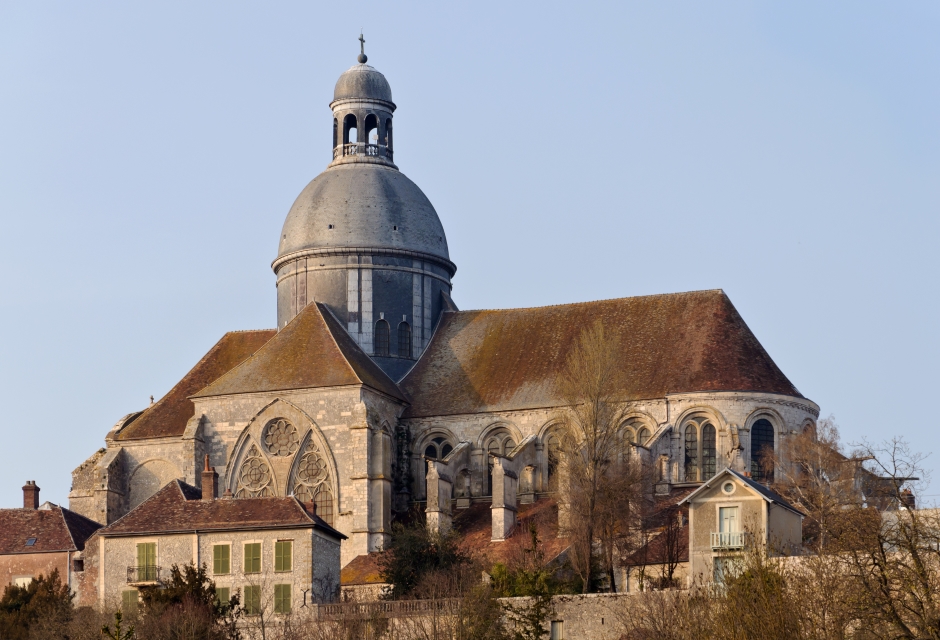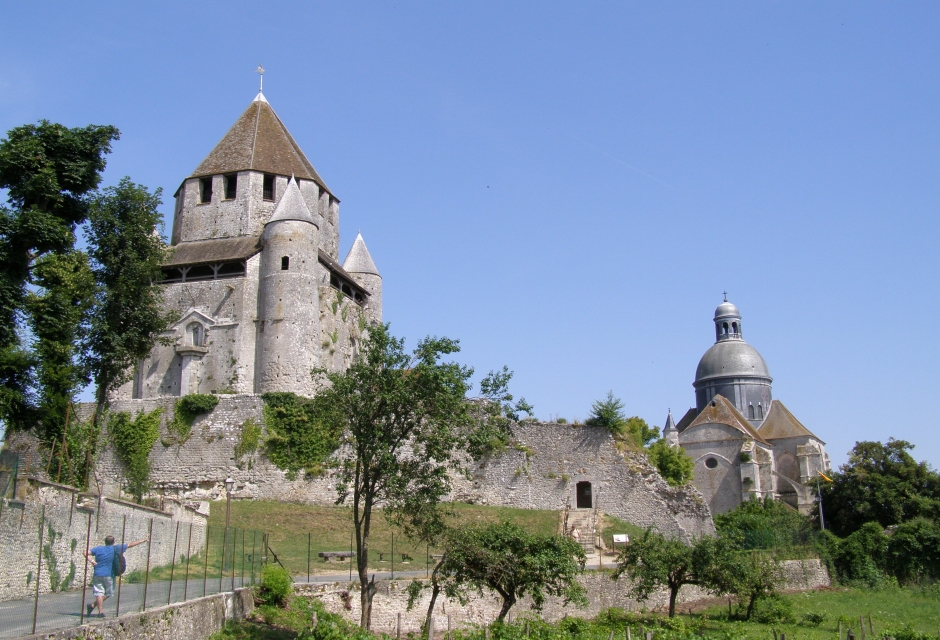Provins
Town of medieval fairs
Country: France | Type: Cultural | Theme: Medieval, Urban Landscape
Introduction to Provins, Town of Medieval Fairs
Situated in the Ile-de-France region in the north central part of the country, Provins is one of 125 communes in the Seine-et-Marne department of France. It is the seat of the arrondissement though it is not the largest city in the area, measuring 14.72 square kilometers (or 5.68 square miles). Once protected by the Counts of Champagne, Provins is now home to about 12,000 individuals and is best known as the site of the medieval trade fairs of Champagne that linked northern Europe and Italy through the trading of textiles, furs, leather, and spices. Today, its well-preserved medieval fortifications, small stone and timber homes, and lovely gardens represent a step back into the past and make it a fascinating place to visit.
The ramparts and fortified gates of Provins are considered great feats of early engineering. The ramparts are believed to have been built between the 11th and 13th centuries while the gates are excellent examples of 14th century royal doors. The fortifications soar to more than 25 meters (82 feet) tall and 1,200 meters (almost 4,000 feet) of these ramparts still circle the Upper Town. The missing parts were most likely used for materials to build homes and other structures. Restoration work on the fortifications has been continuous since the 1970s.
The Ceaesar’s Tower, the iconic symbol of the town, was built from 1152 to 1181 under the direction of Henry the Liberal. Once serving as both a watchtower and prison, it is now home to the bells of the Saint-Quiciace Collegiate Church. Tours are available daily. The Tithe Barn, a 13thcentury structure, was the main site of the covered market of the Champagne Fairs at Provins. In the 17th century it was used as a warehouse for the tithes – the tax on the harvests – hence, its name. Today, it is home to a permanent exhibition that recalls the days of the early merchants who sold textiles and other goods there.
Visitors can also tour Provins’s Underground Galleries. Many were once used as storerooms during the Champagne Fairs and later as places of worship. Others were employed as hospital wards for destitute patients and some were utilized as hiding places during certain periods of turmoil. Inscriptions also indicate that the galleries were used by the local Society of Freemasons. The Provins Area Museum is housed in the Romanesque House, displaying a wealth of artifacts rangings from sculptures and sarcophagi to weapons, tools, jewelry, and more.
Of special note are the gold and silver artifacts of the Saint-Quiriace Church, including a well-preserved 13th century silk vestment. The town also boasts a number of exceptional ecclesiastic buildings including the 12th century Sainte-Croix Church, the recently re-opened and restored 11th century Saint-Ayoul Church, and the 16th century bell tower of Notre-Dame-du-Val. (The remainder of the church was destroyed during the French Revolution.) Those interested in horticulture will want to visit the breathtaking Garnier Gardens and the magnificent estate that sits on the same grounds. Also of note is the Provins Rose Garden, which covers 3.5 hectares and is home to the so-called “Rose of Provins”, brought back to the area by Count Thibault IV of Champagne after the Crusades.
It is believed that the town of Provins got its start in the Middle Ages. Divided into an Upper Town (Castle) and Lower Town (Valley), Provins was given a nod by the Emperor Charlemagne in the early 9th century when he sent his “missi dominici” (envoys of the lord) to the area, granting early importance to the region. At the end of the 10th century, religious artifacts were discovered in the Lower Town, prompting the construction of a number of religious buildings at the site. The Counts of Vermandois were born during this era as well, which eventually gave rise to the Counts of Champagne.
By the medieval era, the town of Provins was quite wealthy, known for the production of cloth as well as for its spectacular troubadours, who were famous throughout Northern France. The town even had its own mint. It was also during this time period that the Champagne Fairs began. The fair at Provins was one of a series of six annual trading fairs in the Champagne and Brie regions, serving to link the cloth-producing cities of the region to the Italian exporting and dyeing centers in the south, especially Genoa. The May fair at Provins began on the Tuesday before the religious holiday of the Ascension and, like all the fairs, lasted for about six weeks. The fairs were responsible for the introduction of new banking concepts such as credit and bookkeeping.
Provins was also known as a center for the arts during and after the medieval time period. Music was an important part of the fairs, as was other entertainment such as juggling. In addition, the Champagne region was known for its excellent literature. The area began to decline in popularity by the 14th century when the trade routes shifted and moved to the higher Alpine passes and to the shipping centers at the Strait of Gibraltar. Religious wars and the spread of The Plague in the region also contributed to Provins’ downfall.
As a fairly small town, Provins can be easily explored on foot. The local tourism commission provides excellent maps for those who wish to explore the town’s 58 National Historic Monuments on a walking tour. Most sites that offer guided tours do so all year long with shorter hours during the winter months. A small fee is charged for most of these tours and proceeds are usually applied to the upkeep of the monument. Various events, fairs, and festivals are held in Provins throughout the year. Lodging can be more difficult to secure during these events so visitors should plan ahead if they are visiting during a specific event.
Getting There:
Provins is 78 kilometers (49 miles) from Paris and is a good day trip from the capital city and an easy destination to reach by automobile or train. Trains leave from Gare de l’Est station in Paris and take about 60-75 minutes each way. These commuter train trips cost about €10. By car, visitors should take the highway towards Metz/Strasbourg to Junction #13 and then follow the signs to Provins. This trip should also take about 75 minutes one way.
Key Facts
Inscribed:2001
Nearest City:Paris
Province:Ile-de-France
Coordinates: Lat: 48.5597, Long: 3.2989
Accessibility:Easy
Services:Extensive
Highlights
- Provins was central to the economy of medieval France.
- Ramparts built between the 11th and 13th centuries.
- A showcase of medieval military, civil, and religious architecture
- Underground galleries once used as hiding places and storerooms.
- Provins is a prime area for the cultivation of roses
Find a Tour
Like to visit? Fill out this form and reliable local hospitality companies will contact you to discuss your ideas.




